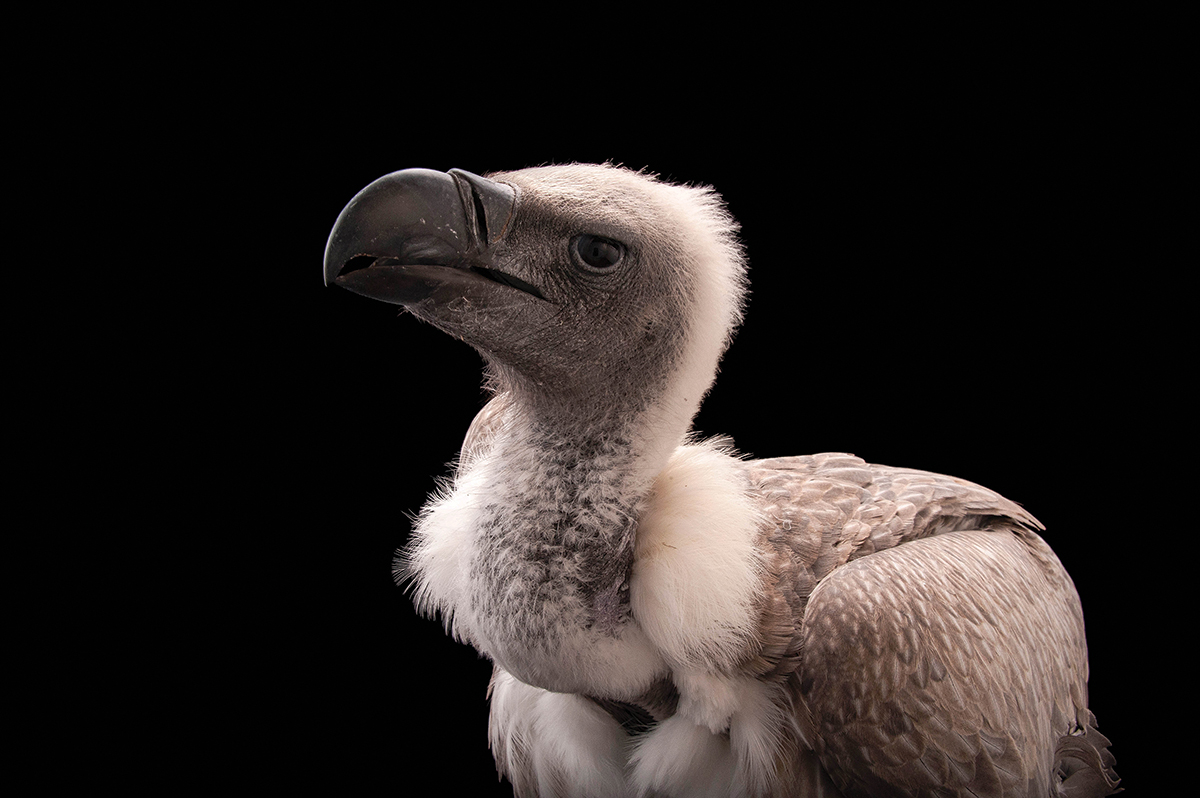National Geographic photographer races to memorialize the animal kingdom

African White Backed Vulture, by Joel Sartore
Weighing as much as 15,000 pounds, the African elephant is a massive, hulking creature. The Choctawhatchee beach mouse, on the other hand, is a half-ounce, seed-munching rodent native to the southeastern U.S. And photographer Joel Sartore sees no difference in these mammals’ significance.
“My goal,” says Sartore, “is to make a mouse look just as large and important as an elephant — giving all species an equal voice.”
A conservation photographer with National Geographic, Sartore has spent decades snapping photos of the animal kingdom. But his subject matter is fleeting.
According to a report from the World Wildlife Fund, wildlife populations have declined by 69 percent since 1970. One after another, species of fish and amphibians and birds and mammals have quietly disappeared — a wave of loss scientists are calling the “sixth mass extinction.”
In the early part of his career, Sartore felt helpless as biodiversity continued to careen downward. But in 2005, when his wife Kathy was diagnosed with breast cancer, he decided to confront life’s impermanence head-on.
“I decided to focus on one big project and really try to move the needle of conservation,” he recalls.
So the National Geographic Photo Ark set sail.
The premise of Sartore’s multi-year project is simple yet groundbreaking: to document every species in captivity around the world before it’s too late. So far, he has traveled to more than 50 countries and photographed more than 13,000 species in zoos and wildlife sanctuaries.
His subjects range from threatened subspecies of dignified, familiar-looking animals — Barbary lions and Mexican gray wolves, for instance — to more whimsically exotic creatures. The Philippine tarsier, for example, is a nocturnal primate with huge, cartoonish eyes. There’s also the double-wattled cassowary, a large flightless bird that looks like it belongs in Jurassic Park.
Sartore is especially fond of photographing these “weird and wonderful species” because they allow people to connect with animals they had no clue even existed.
Of course, getting the perfect shot — one that will inspire viewers to see an animal’s “true beauty and worthiness” — isn’t easy. Though some subjects are willing participants, others are less accommodating. Sartore’s first chimpanzee photo session at the Sunset Zoo in Kansas, for instance, was as ridiculous as it was unsuccessful.
“The chimps completely destroyed my set,” says Sartore, who even reinforced the white backdrop with heavy-duty duct tape. “The shoot lasted less than three seconds.”
He did, eventually, get to photograph a chimpanzee. However, with approximately 7,000 more species to capture, there’s still work to be done before time runs out.
“Unfortunately, I have seen species go extinct since starting the Photo Ark,” says Sartore. “It saddens me greatly, but also inspires me to want to give everything I’ve got to this project and use extinction as a wake-up call: As these species go away, so could we.”
A collection of images from the National Geographic Photo Ark will be on display at the North Carolina Arboretum’s Baker Visitor Center Exhibit Hall (100 Frederick Law Olmsted Way, South Asheville). The exhibit runs through Sunday, Jan. 8. There’s no additional cost to visitors beyond the Arboretum’s usual parking fee of $16 per personal vehicle for nonmembers. Members park for free. For more information, visit ncarboretum.org.
